Ivan Čuk
Editorial
Nunomura Myrian, Roslyn Kerr, Georgia Cervin, Astrid Schubring, Natalie Barker-Ruchti
THE CODE OF POINTS AND THE CAREER DEVELOPMENT IN WOMEN´S ARTISTIC GYMNASTICS
Bortoleto Marco, Thomas Heinen, Sun Jun, Eliana Toledo, Laurita Schiavon, Lívia Pasqua, Mauricio Oliveira, Fernanda Menegaldo
WHAT MOTIVATES PEOPLE TO PARTICIPATE IN A NON-COMPETITIVE GYMNASTICS FESTIVAL? – A CASE STUDY OF WORLD GYMNAESTRADA
Paula Debien, Bernardo Miloski, Thiago Timoteo, Camila Ferezin, Maurício Bara Filho
WEEKLY PROFILE OF TRAINING LOAD AND RECOVERY IN ELITE RHYTHMIC GYMNASTS
Amanda Batista, Rui Garganta, Lurdes Ávila-Carvalho
BODY DIFFICULTIES IN RHYTHMIC GYMNASTICS ROUTINES
Petr Kutac, Sona Jurkova, Roman Farana
MORPHOLOGICAL CHARACTERISTICS OF YOUNG FEMALE ARTISTIC GYMNASTS FROM THE CZECH REPUBLIC
Yaiza Taboada-Iglesias, Águeda Gutiérrez-Sánchez, Tania García-Remeseiro, Mercedes Vernetta-Santana
BODY PROPORTIONALITY IN ACROBATIC GYMNASTS OF DIFFERENT COMPETITIVE CATEGORIES
Michalis Proios
EFFECTS OF PRACTICE STYLE ON A COMPLEX GYMNASTICS SKILL PERFORMANCE OF HIGH-, MEDIUM-, AND LOW-SKILLED LEARNERS
Sameh Wali-Menzli , Sarra Hammoudi-Nassib , Souhaila Ismail, Sabra Riahi Hammoudi, Ines Knani Hamrouni, Mohamed Jarraya
ROLE OF THE MENTAL REPRESENTATION IN ENHANCING MOTOR LEARNING AND PERFORMING GYMNASTIC ELEMENT
Dallas George, Alexandros Mavvidis, Ioanna Kosmadaki, Sofija Tsoumani, Konstantinos Dallas
THE POST ACTIVATION POTENTIATION EFFECT OF TWO DIFFERENT CONDITIONING STIMULI ON DROP JUMP PARAMETERS ON YOUNG FEMALE ARTISTIC GYMNASTS
Ligia Diener, Esteban Aedo-Muñoz
SYSTEMATIC REVIEW OF YURCHENKO VAULT KINETIC AND KINEMATIC INDICATORS
Anton Gajdoš
Short historical notes XIV
Science of Gymnastics Journal
Reviewers 2018
Ivan Čuk
Editorial
Dear friends,
In this issue, we have ten articles with authors from Brazil, New Zealand, Australia, Sweden, Germany, the Republic of Korea, Portugal, the Czech Republic, Spain, Greece, Tunisia and Chile. The articles cover psychology, sport training, anthropometric characteristics, motor learning, kinesiology, and biomechanics. Among gymnastics disciplines, most are dealing with the man and the women artistic gymnastics, but we also have an article on the rhythmic, acrobatic and the general gymnastics. Our last issue had the Olympic Games as its theme. If there is interest among researchers, we would be open to preparing another special issue on a theme e.g. motor control in gymnastics, motor learning in gymnastics, etc. Anton Gajdoš prepared another article related to the history of gymnastics, refreshing our knowledge of 100 years since the Czechoslovakian Gymnastics Federation was established. Last year was special as we published a record number of articles, 34 in total. After evaluation, some articles were unfortunately rejected, mostly due to their non-gymnastics content and, in a few cases, extremely poor language. However, last year our journal saw an improvement in the h-index: in SCOPUS it is 7 and in WoS 4. As we haven’t been present in WoS for long, it will take some time to gain the same h-index in both. If we manage to publish more than 25 articles by October, we will fulfil the criteria in PUBMED to have 50 articles in a two year-span and will start the evaluation process to be included in the PUBMED. We need to emphasis diligent work of reviewers and give them credit to have quality articles. All reviewers in year 2018 are listed. Just to remind you, if you quote the Journal: its abbreviation on the Web of Knowledge is SCI GYMN J. I wish you pleasant reading and a lot of inspiration for new research projects and articles
Nunomura Myrian, Roslyn Kerr, Georgia Cervin, Astrid Schubring, Natalie Barker-Ruchti
THE CODE OF POINTS AND THE CAREER DEVELOPMENT IN WOMEN´S ARTISTIC GYMNASTICS
The premise of this article is that the rules of Women´s Artistic Gymnastics (WAG) as outlined in the Code of Points significantly affect the experiences of older gymnasts in both positive and negative ways. The aim of this study was to explore the perceptions of gymnasts, coaches, and judges on the WAG rules and the body ideals, age and career length in Brazil. We draw on qualitative interviews with a sample of two coaches and seven gymnasts from the Brazilian national team, and four judges with international experience. Both coaches and gymnasts perceived younger bodies to be more responsive to the actual rules requirements regarding difficulty and training demands. On the other hand, older gymnasts were felt to be advantaged due to being able to perform more artistically and with less mistakes. Results will allow both the FIG and the Brazilian Gymnastics Federation to reflect on the way the demands of the Code of Points affect the experiences of gymnasts. As our article finds both the rules and the established WAG culture affect gymnasts, both needs to be considered in order to keep healthy gymnasts in the sport longer. Key words: women’s artistic gymnastics, body ideals, career development, ageing, rules
Bortoleto Marco, Thomas Heinen, Sun Jun, Eliana Toledo, Laurita Schiavon, Lívia Pasqua, Mauricio Oliveira, Fernanda Menegaldo
WHAT MOTIVATES PEOPLE TO PARTICIPATE IN A NON-COMPETITIVE GYMNASTICS FESTIVAL? – A CASE STUDY OF WORLD GYMNAESTRADA
Sport participation might have very different goals, especially for non-competitive events. This study analyses the motivation of participants to join in the XV World Gymnaestrada in Helsinki in 2015, which is considered one of the largest international non-competitive gymnastics festival worldwide. Methods: The Goal Content for Exercise Questionnaire (GCEQ) was applied to 86 adults (56 female/ 30 male) and analyzed statistically. In addition, 24 short interviews were conducted and the data were analyzed by a Content Analysis. Results: “Social Affiliation” and “Skill Development” seem to be the principal motivations. Both are more important for women than for men. “Social Recognition” was also of particular relevance for the participants. Finally, the number of WG participations shows the same tendency in motivation for beginners and very experienced participants. Keywords: gymnastics for all, gymnastics festivals, motivation, non-competitive sports, sport participation
Paula Debien, Bernardo Miloski, Thiago Timoteo, Camila Ferezin, Maurício Bara Filho
WEEKLY PROFILE OF TRAINING LOAD AND RECOVERY IN ELITE RHYTHMIC GYMNASTS
The aim of this study is to analyze the weekly profile of internal training load (ITL) and recovery of elite rhythmic gymnasts during a season. Eight professional rhythmic gymnasts of the Brazilian senior group participated. The session rating of perceived exertion (session-RPE)
and Total Quality Recovery (TQR) score were collected daily across a 37-week season. The session-RPE was collected after each session and the TQR before the first session of the day. The sum of ITL of each session of the day (dITL) and week (wITL), as well as average TQR
scores, were retained for the analysis. Training monotony and strain were also recorded. For the analysis, the season was divided into preparatory period, competitive period and a period comprising the competition weeks, within the competitive period. The ITL and recovery profile were different between the days of the periods and the competition weeks. The competitive period as a whole showed higher mean wITL, dITL, and strain, and lower monotony than the others. However, during the competition weeks gymnasts presented the worst recovery and highest monotony scores, despite the lowest mean wITL and dITL. Negative correlation was found between dITL and TQR of the following day (r= -0.333; p<0.001). The ITL and recovery profile changed between the season periods and competition weeks. The training load profile of the competitive period and competition weeks did not guarantee good recovery, especially on the weekend. More variability in load magnitude is suggested, possibly including a day off, during competitive periods and competition weeks.
Keywords: session rating of perceived exertion, Total Quality Recovery, competition, gymnast.
Amanda Batista, Rui Garganta, Lurdes Ávila-Carvalho
BODY DIFFICULTIES IN RHYTHMIC GYMNASTICS ROUTINES
The aims of this study were: (1) to analyze the diversity and variety of body difficulty elements in individual routines of elite rhythmic gymnasts that competed at the 2013 and 2014 Lisbon World Cup; (2) to compare these characteristics across different ranking groups; (3) to identify and hierarchize the variables that most contribute to the success in the difficulty score in competition. 288 routines were analyzed based on difficulty, according to the 2013-2016 Code of Points. The gymnasts were divided into three groups according to their ranking routine. For statistical analyses, Kruskal-Wallis’ and Mann-Whitney’s non-parametric tests, Pearson Correlation and multiple regression were used. Among all body difficulties, the rotation elements were the group with the most variety, while jump elements had the least variety. Gymnasts tend to use the same jumps, balance elements and rotations in all their routines. The gymnasts in the finals (finalists) presented a higher number of complex elements (mixed and multiple difficulties) than the other groups. However, the best gymnasts showed a lower variety in the choice of body difficulties. Their routines focused on rotation elements and number of turns. Lower occurrences of balance and jump elements were verified. We identified the following hierarchy of importance of the variables that contribute to the success in the difficulty score: value of rotations; value of jumps; value of balance elements and value of mixed difficulties. Therefore, the rotation elements presented a higher importance in the routines in RG in the Olympic cycle 2013-2016. Keywords: body difficulty, rhythmic gymnastics routines, elite gymnasts
Petr Kutac, Sona Jurkova, Roman Farana
MORPHOLOGICAL CHARACTERISTICS OF YOUNG FEMALE ARTISTIC GYMNASTS FROM THE CZECH REPUBLIC
The aim of the study is to analyse the somatic parameters of artistic gymnasts in the pupil competition category and to compare them with the values of the general population in the corresponding age group. The study included 16 female gymnasts in the pupil category and 652 girls in the same age group, which formed the control group. Body height was measured using a stadiometer InBody BSM 370, body mass and body composition by BIA analyser InBody 770 (Biospace, South Korea). The monitored values of each gymnast we compared with the mean values of the control group at the corresponding age separately, using the normalisation index (Ni). The results of the study show that the gymnasts in the youngest competition category already differ in basic anthropometric parameters from the general population. Since the age of nine, the gymnasts have a lower body height (except for one person) and lower body weight than the girls in the general population. The body height and body mass values are below average or highly below average in nine gymnasts (56.3%). The high volume of specific physical activity of the gymnasts, included in their training, affects their body composition parameters. The gymnasts have lower body fat (%) and visceral fat (cm2), their values are below average to highly below average, and higher skeletal muscle mass (%), with values above average or highly above average. Keywords: artistic gymnastics, youth, female, morphology
Yaiza Taboada-Iglesias, Águeda Gutiérrez-Sánchez, Tania García-Remeseiro, Mercedes Vernetta-Santana
BODY PROPORTIONALITY IN ACROBATIC GYMNASTS OF DIFFERENT COMPETITIVE CATEGORIES
Acrobatic Gymnastics is a gymnastics discipline with a key differentiating element in terms of the role (top and base) played by the gymnasts making up the team. The establishment of the morphological profile is a determining factor as a predictor of sport performance. This study was aimed at establishing the proportional profile based on the proportionality indices of different competitive categories, and determining whether there were differences between them. The study involved 150 Spanish acrobatic gymnasts of both genders, competing nationally and internationally. The measurements were taken following the standards established by the International Society for the Advancement of Kinanthropometry. The different proportionality indices of tops and bases were analyzed, performing the comparative analysis according to the competitive categories of gymnasts. The results showed that among the female tops, there are no significant differences (p < 0.05) in the analyzed variables, observing similarities in their proportionality. In all of the categories, both tops and bases have short upper and lower extremities in relation to the classification of these indices. The medium trunk length predominates in all categories except for the men’s pair. Most gymnasts have a trunk of an intermediate shape, except in certain cases, when it has a trapezoid shape (tops in women's pairs and bases in men's and mixed pairs). A difference between arm span and height is observed in both tops and bases, according to their competitive category. The results suggest paying attention to these slight differences in body proportionality, in order to guide gymnasts toward a specific competitive category. Keywords: acrobatic gymnastics, proportionality indices, competitive category
Michalis Proios
EFFECTS OF PRACTICE STYLE ON A COMPLEX GYMNASTICS SKILL PERFORMANCE OF HIGH-, MEDIUM-, AND LOW-SKILLED LEARNERS
This study examined the effect of the practice style of teaching in teaching a complex gymnastic skill and compared the achievements of low, medium and high skilled learners on motor skill performance. 46 students of the first highschool grade aged 12-14 years, of two classes, were taught using practice style of teaching the handstand forward roll during (12) lessons, 30 minutes each, 2 times per week. The skill performance has been recorded and evaluated prior, post and two weeks after the end of the program. Based on the initial compound measurement scores, students were grouped into three equal groups of low, medium and high skill. The 3 x 3 analysis of variance (skill level group x test), with repeated measurements in the last factor showed that all the groups have improved their performance both in outcome (quantitative measurement) and in technique (qualitative measurement) of the handstand forward roll and that there were significant effects for the learners’ skill level. This study showed that low skilled learners improved to a greater extent, compared to those of medium and high skill, particularly as for the skill outcome. Keywords: Practice style of teaching, motor learning, gymnastics skills, adolescents
Sameh Wali-Menzli , Sarra Hammoudi-Nassib , Souhaila Ismail, Sabra Riahi Hammoudi, Ines Knani Hamrouni, Mohamed Jarraya
ROLE OF THE MENTAL REPRESENTATION IN ENHANCING MOTOR LEARNING AND PERFORMING GYMNASTIC ELEMENT
The aim of the present study was to analyze the effect of three intervention modalities ((a) external visual imagery modality, (b) verbal feedback modality and (c) visualization modality) on the Roll backward to handstand. 42 females’ students (age 20.6 ± 1.3 years) voluntarily took part in this study. Subjects were assigned into three groups according to three learning modalities: mental imagery modality, verbal feedback modality and visualization modality. During the two testing sessions (before and after training sessions), the participant was marked according to the FIG Code of Points. The results thus reveal a significant effect on the training, therefore on the learning of the backward roll followed by a handstand by the method of mental imagery. Thus, the mental imagery seems to be a tool for transmission of knowing and training by excellence making it possible to the students to progress while getting rid of the lack of motivation, organization, implication and work. Moreover, the results gathered following the gymnastic practice also show an improvement of the performance of the first group that had to undergo training by verbal feedback. This supports the idea that the training by the method of verbal feedback improves the technical performance of a gymnastic element. However, the method of training by visualization of a model appears to be the less developed by the participants in comparison with the mental imagery and the verbal Feedback. Keywords: sensory feed back, motor learning, female, acrobatic.
Dallas George, Alexandros Mavvidis, Ioanna Kosmadaki, Sofija Tsoumani, Konstantinos Dallas
THE POST ACTIVATION POTENTIATION EFFECT OF TWO DIFFERENT CONDITIONING STIMULI ON DROP JUMP PARAMETERS ON YOUNG FEMALE ARTISTIC GYMNASTS
The purpose of this study was to examine the post activation potentiation (PAP) effect of two different conditioning stimuli (CS) on drop jump (DJ) parameters on young female gymnasts. Thirty young female artistic gymnasts, aged 8 to 13 years old performed two protocols of either double tuck jumps (DTJ: 2 sets of 5 repetitions) or legs blocking action (LBA: 2 sets of 5 repetitions) in a within-subject randomized design. Before and immediately after the PAP treatment and 4, 8, 12, and 16 min after, jumping ability was measured by performing a drop jump (DJ). Statistical analysis revealed significant interaction effect between the two CS for DJ height (p < 0.002), time flight (p < 0.002) and take-off velocity (p < 0.003). Furthermore, significant main effect was found for protocol on DJ height (p < 0.001) and time flight (p < 0.001). It is recommended to the sports experts to include similar condition stimuli in the warm-up procedure, in order to improve their jumping performance. Conclusive both CS cause PAP phenomenon but the specialized CS produces higher rates of improvements in young female artistic gymnasts. Key words: plyometric exercise, artistic gymnasts, drop jump.
Ligia Diener, Esteban Aedo-Muñoz
SYSTEMATIC REVIEW OF YURCHENKO VAULT KINETIC AND KINEMATIC INDICATORS
The aim of this article was based on determining the most relevant kinematic indicators in the Yurchenko vault technique, using the mechanical purposes of each phase as linking elements. A systematic qualitative review was carried out with an initial search of 67 scientific documents, of which 27 were selected by matching the Yurchenko key words, kinetic, kinematic and artistic gymnastics and their respective combinations. It was concluded that the main kinetic and kinematic indicators involved in this vault are: acceleration, speed, distance, displacement, trajectory, contact time, flight time, percentage of deformation and angular momentum that exert on the center of mass. The following article is proposed as a study instrument to guide in the correct direction of kinetic and kinematic factors to be considered in the effective execution of the Yurchenko vault technique. Key words: yurchenko, kinetic, kinematic, center of mass, vault, gymnastic
Anton Gajdoš
Short historical notes XIV
Science of Gymnastics Journal
Reviewers 2018







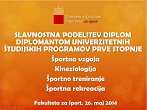


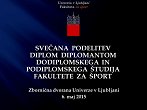





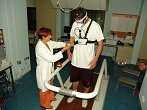



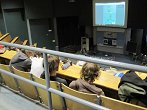
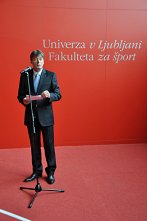





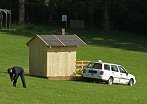

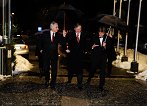

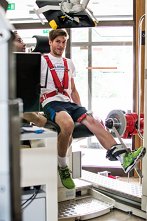


.png)